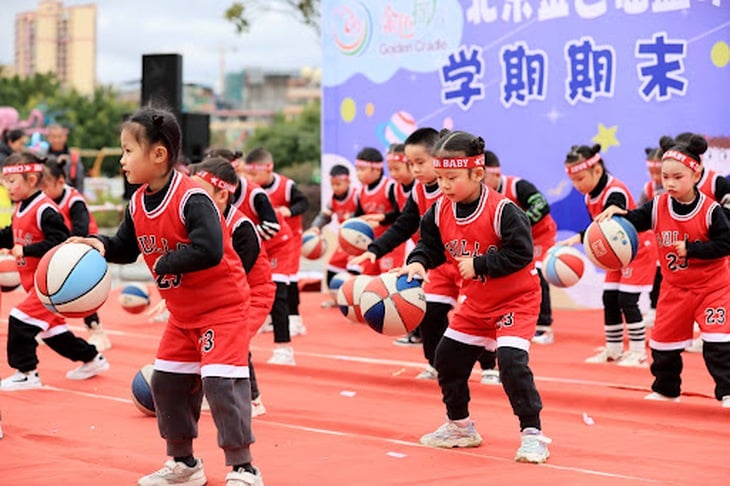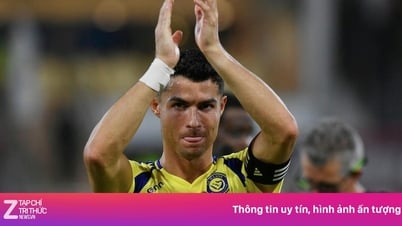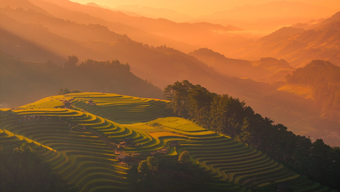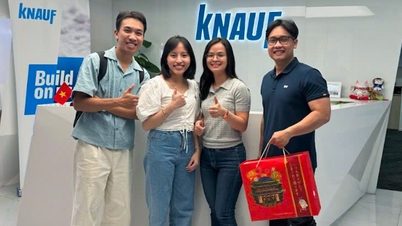
China today has many athletes over 1m90 tall like Vuong Thuan (swimming) - Photo: REUTERS
The number of young Chinese people who meet the physical criteria is very large, and a significant number of them come from the North, namely the provinces of Shanxi, Shandong, Hebei, Liaoning...
Data from the Chinese Academy of Sciences shows that the average height of Chinese men is 1m70. But the average height of men in Beijing is up to 1m75. The corresponding figures for Hebei and Shanxi provinces are also 1m76 and 1m74.
"Scholars of Yan and Zhao" (people of Yan and Zhao, corresponding to today's Hebei and Shanxi provinces) is a Chinese saying from the Spring and Autumn and Warring States period, expressing respect for men born in the northern regions. The armies of the northern regions are always taller, braver, and better at fighting.
It can be seen that the average height of men in Northern China today is on par with that of European countries. Some countries such as Italy (average height of men 1m74) or Portugal (1m73) are even lower.
Why are northern Chinese people so tall? This has long been a topic of research by scientists. Here is the conclusion of the Chinese Academy of Sciences:
1. Genetic factors
Genetic factors account for about 60–80% of a person's ability to achieve maximum height. In China, northern populations tend to carry more prominent height-related genetic traits.
Northerners have a long history of development in cold and dry plains, such as Shandong, North China and Northeast (Manchuria). They have ancestors from the Northern Han and nomadic ethnic groups such as Mongols and Manchus – ethnic groups that are naturally taller.
Additionally, cold environments often promote larger body shapes (according to Bergmann's Rule) to help retain heat better.
2. Nutritional factors
Nutrition is an important exogenous factor that determines the extent to which genetic height potential is "revealed". In the case of China, the North and the South have distinctly different traditional diets.
Eat wheat – more protein than rice
Northern Chinese eat a lot of noodles, dumplings, and steamed buns made from wheat. Wheat has a significantly higher protein content (~13–15%) than rice (~6–8%).
Protein is the main material for building bones and muscles – the core factor in height development.
Higher meat and dairy consumption
The colder climate in the North makes people tend to eat more red meat, animal fat, eggs and milk – rich sources of calcium and protein.
Regions such as Shandong, Inner Mongolia and Heilongjiang have a tradition of consuming milk and cheese (especially among nomadic populations).
Many southern provinces, due to hot and humid weather and a tradition of “light” eating, have a diet lower in protein and higher in vegetables and fruits – good for health, but can limit potential height.
Post-reform lifestyle and diet (after 1978):
After economic reform, Northern China recovered and developed heavy industry faster, living standards increased, leading to improved nutritional quality.
“Nutrition-rich school lunch” programs have been strongly implemented in the North, especially in Beijing, Shandong, and Hebei since the 1990s.
3. Movement and sports factors
Physical exercise, especially sports that impact bones and stimulate growth hormones, helps children reach optimal height when combined with good nutrition. In China, this factor is clearly promoted in the northern provinces.

Chinese children are given the opportunity to play basketball - Photo: TKA
Sports culture is more popular
Provinces such as Beijing, Shandong, Hebei, and Heilongjiang have strong traditions in sports such as basketball, volleyball, athletics, skating, and hockey – all of which have a positive impact on long bone development.
Schools in the North have organized more systematic sports activities and have received more government investment in the past decade.
For example, Shandong province has the strongest youth basketball training system in China, accounting for the majority of the national team.
Military tradition and school sports
Northern China is the traditional heartland of the Chinese military – with high physical standards, especially height.
From a young age, students in provinces like Tianjin, Shanxi, and Liaoning are trained in highly "militarized" sports such as gymnastics, endurance running, martial arts, and shooting.
Standardizing physical training also helps to accelerate height growth.
Policy to support children's movement
Since 2010, China has launched the “National Fitness Program”, with the aim of increasing the proportion of students participating in sports every day.
Northern provinces benefit from central budget investment in school sports and better facilities than some rural areas in the South.
Source: https://tuoitre.vn/vi-sao-nguoi-phuong-bac-trung-quoc-cao-to-20250429163228921.htm


![[Photo] National Assembly Chairman Tran Thanh Man receives United Nations Secretary-General Antonio Guterres](https://vphoto.vietnam.vn/thumb/1200x675/vietnam/resource/IMAGE/2025/10/25/1761390815792_ctqh-jpg.webp)



![[Photo] Prime Minister Pham Minh Chinh and United Nations Secretary-General Antonio Guterres attend the Press Conference of the Hanoi Convention Signing Ceremony](https://vphoto.vietnam.vn/thumb/1200x675/vietnam/resource/IMAGE/2025/10/25/1761391413866_conguoctt-jpg.webp)
![[Photo] Prime Minister Pham Minh Chinh receives United Nations Secretary-General Antonio Guterres](https://vphoto.vietnam.vn/thumb/1200x675/vietnam/resource/IMAGE/2025/10/25/1761390212729_dsc-1484-jpg.webp)



















![[Photo] General Secretary To Lam meets with General Secretary and President of Laos Thongloun Sisoulith](https://vphoto.vietnam.vn/thumb/1200x675/vietnam/resource/IMAGE/2025/10/25/1761380913135_a1-bnd-4751-1374-7632-jpg.webp)

















































































Comment (0)